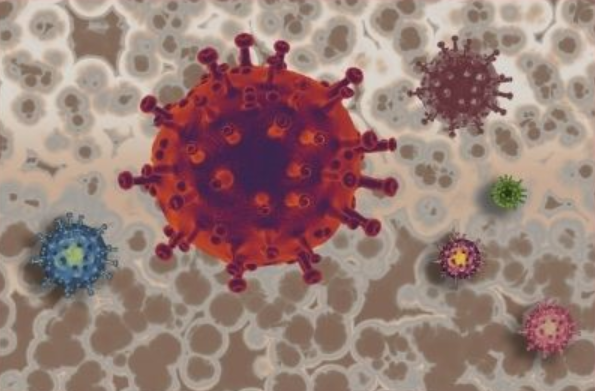Nutrition Gut Health Series: The Microbiome
Nutrition Gut Health Series: The Microbiome

What is the microbiome?
Microbes are tiny microorganisms, mostly bacteria, viruses, and fungi that are invisible to the naked eye and live in the environment all around us. We coexist peacefully with these microbes and often benefit from them. Microbes can be found on the skin, but they are most abundant in the human gastrointestinal tract, more specifically in the small and large intestines. This is what is referred to as the microbiome.
The microbiome is made up of a variety of species of microbes, mostly bacteria, some of which are helpful and some of which can be harmful. The microbiome is first established in infancy where the infant is exposed to microorganisms during delivery and through their mother’s breast milk.
Just like your DNA, each person has a unique composition of different species and concentrations of microbes that make up their microbiome. During infancy, the composition of the microbes within the infant depends on the mother. As the child grows, their composition changes depending on their environment and their diet.
Benefits of the microbiome
We coexist peacefully with microbes in the microbiome and benefit from a mutual relationship. We feed the microbes through our diet, but how do they benefit us? Microbes stimulate the body’s immune system. In fact, about 70% of the body’s immune system is located in the gut! Microbes also break down toxic substances, synthesize important vitamins and amino acids, and protect the body against pathogens, or microorganisms that cause disease.
The microbiome is a complex living system of microorganisms that benefits us and benefits from us. While research has provided us with much insight into the inner-workings of these microbes, more research is still needed to fully understand the relationship between the microbiome and influence on human disease and mental health.
How does diet affect the microbiome?
In a healthy microbiome, the abundance of healthy or “good” bacteria keep the “bad” bacteria at bay. An imbalance of good and bad bacteria can be caused by prolonged use of antibiotics, an infectious illness, or even certain diets. If the imbalance is not corrected, it can put the body at risk for disease.
So how exactly does diet play a role in the composition of the microbiome? Think dietary fiber. Dietary fiber plays an important role in the balance of good and bad bacteria that make up the microbiome.
Fiber cannot be broken down by the body, instead it is fermented by the microbes living in the intestines. The fermentation process lowers the pH of the intestines. This drop in pH limits the growth of bad bacteria like Clostridium difficile, keeping it at normal levels.
Fiber supplements and prebiotic supplements are available on the market, but consuming whole food sources of fiber is best as these foods contain important nutrients and antioxidants. Some whole food sources of fiber that supports microbiome gut health include pears, strawberries, apples, bananas, broccoli, brussels sprouts, chickpeas, oats, and sweet potatoes.
In general, it is recommended that people consume 14 grams of fiber for every 1,000 calories or about 25 grams for women and 38 grams for men. Consumption of probiotic foods in the diet can also help benefit the microbiome. (See post on probiotics and prebiotics for more information).


 Home Base
Home Base